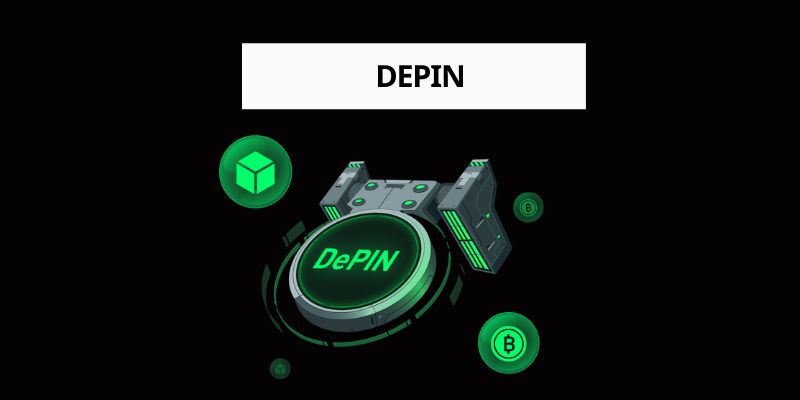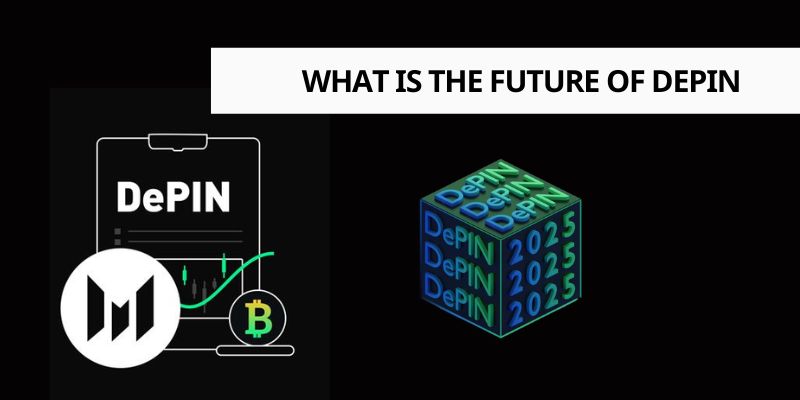What is the Future of DePIN? The Next Frontier of Decentralized Infrastructure
Decentralized Physical Infrastructure Networks (DePIN) are redefining how we think about infrastructure in the digital age. By combining blockchain technology with real-world assets like energy grids, wireless networks, and storage systems, DePIN is paving the way for a more inclusive and efficient future. But what is the future of DePIN? In this article, we’ll dive into the evolving landscape of DePIN, its potential impact, emerging opportunities, and the obstacles it must navigate to achieve widespread success.
Contents
DePIN Explained: A Foundation for the Future
To understand what is the future of DePIN, we first need to grasp its essence. DePIN stands for Decentralized Physical Infrastructure Networks—systems that use blockchain to coordinate and incentivize contributions to physical infrastructure. Think of individuals setting up solar panels for a shared energy network or hosting nodes for a decentralized internet. Projects like Render (computing power), Hivemapper (mapping), and WeatherXM (weather data) illustrate how DePIN turns everyday participants into infrastructure providers. So, what is the future of DePIN? Let’s explore the possibilities.

The Road Ahead: What is the Future of DePIN?
The trajectory of DePIN is shaped by innovation, adoption, and societal needs. Here are the key factors driving what is the future of DePIN:
1. Scalable Blockchain Solutions
As blockchain technology evolves, DePIN stands to benefit from faster, cheaper, and more energy-efficient networks. Advances like sharding, zero-knowledge proofs, and modular blockchains (e.g., Celestia) will allow DePIN to support millions of devices and users seamlessly. This scalability is crucial for what is the future of DePIN, enabling it to compete with centralized giants in industries like logistics and telecommunications.
2. Expansion into New Industries
DePIN’s versatility opens doors to untapped markets. Beyond current leaders like decentralized storage and connectivity, future applications could include decentralized water management, waste recycling networks, or even healthcare infrastructure powered by IoT devices. What is the future of DePIN? It’s a multi-industry revolution that reimagines how physical resources are deployed and managed.
3. Economic Empowerment
DePIN flips the traditional model by rewarding contributors with tokens rather than funneling profits to corporations. A farmer in a rural area could earn income by hosting a weather station, while a city dweller might profit from sharing unused computing power. This shift toward economic inclusion is a cornerstone of what is the future of DePIN, fostering a global network of micro-entrepreneurs.
4. Enhanced Security and Autonomy
Centralized systems are vulnerable to single points of failure—hacks, outages, or government overreach. DePIN’s distributed architecture mitigates these risks, offering greater security and autonomy. For example, a decentralized satellite network could provide internet access in censored regions. What is the future of DePIN? A world where infrastructure is harder to control or disrupt.
5. Collaboration with Governments and Enterprises
While DePIN thrives on decentralization, its future may involve partnerships with traditional players. Governments could adopt DePIN for public utilities, while enterprises might integrate it into supply chains. This hybrid approach could accelerate adoption, making what is the future of DePIN a blend of grassroots innovation and institutional support.

Opportunities on the Horizon
The possibilities for DePIN are vast, offering unique value across sectors. Here’s how what is the future of DePIN could transform our world:
- Mapping and Navigation: Decentralized mapping networks like Hivemapper could outpace Google Maps with real-time, community-sourced data.
- Computing Power: Platforms like Render could democratize access to GPU resources, fueling AI and gaming innovation.
- Environmental Monitoring: WeatherXM and similar projects could create hyper-local climate data networks, aiding disaster preparedness.
- Rural Connectivity: DePIN could bridge the digital divide by incentivizing network deployment in remote areas.
- Supply Chain Transparency: Decentralized tracking systems could ensure ethical sourcing and reduce inefficiencies.
These use cases underscore what is the future of DePIN: a catalyst for solving real-world problems with decentralized ingenuity.
Hurdles to Address
Despite its promise, what is the future of DePIN faces challenges that must be resolved:
- Adoption Barriers: Educating users and overcoming skepticism about decentralized systems will take time.
- Hardware Dependency: DePIN relies on physical devices, which can vary in quality and availability.
- Regulatory Uncertainty: Governments may impose restrictions, especially in sensitive sectors like energy or telecom.
- Competition: Centralized incumbents with deep pockets could resist or co-opt DePIN’s innovations.
Overcoming these obstacles will determine what is the future of DePIN and its ability to scale globally.
Why DePIN is a Game-Changer
So, what is the future of DePIN? It’s a bold reimagining of infrastructure that prioritizes resilience, equity, and innovation. By decentralizing control and rewarding participation, DePIN challenges the dominance of centralized systems and aligns with the ethos of Web3. It’s Ascending a ladder of affordability and access, DePIN could become a cornerstone of tomorrow’s economy—a future where infrastructure isn’t just for the few, but for the many.
For innovators, investors, and everyday users, DePIN represents a chance to shape the future. As it matures, what is the future of DePIN points to a decentralized world where power—both literal and figurative—is in the hands of the people.